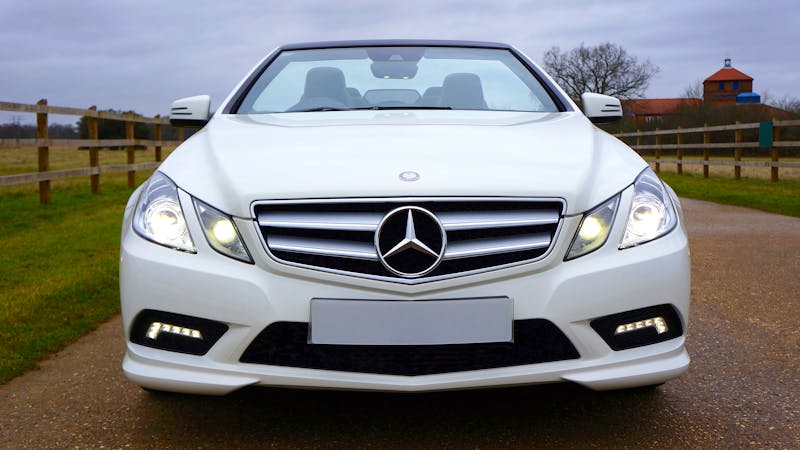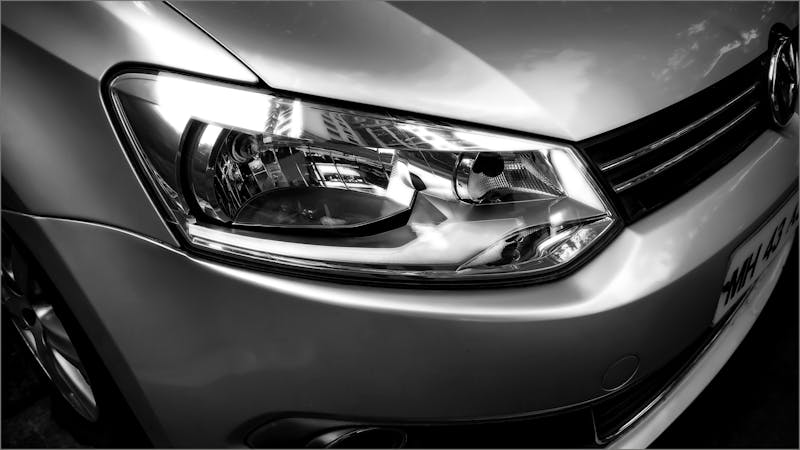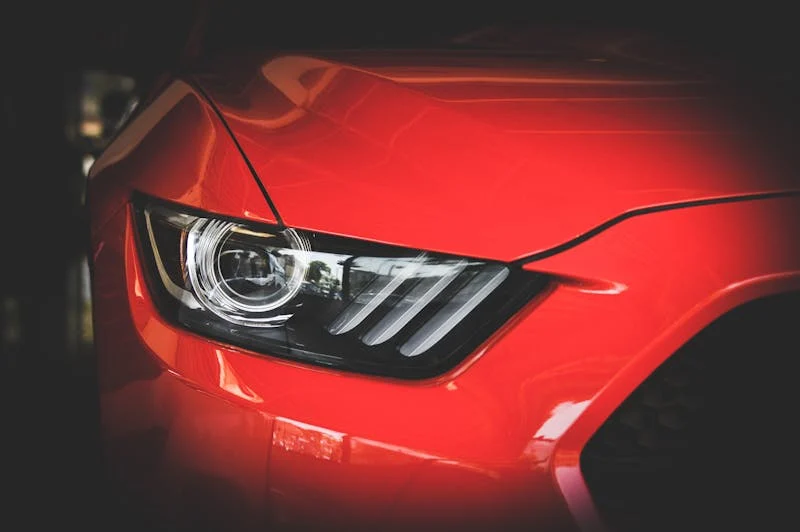How Regulations and Certifications Influence the Development of the LED Headlight Market|BLIAUTO Automotive Lighting In-Depth Analysis
Bliauto examines how regulations and certifications shape brand manufacturers' LED headlight strategies and manufacturing LED headlight processes. Insightful analysis for Brand LED Headlight market development and compliance.
- I. Why Are Regulations and Certifications Critical for LED Headlights?
- 1. Automotive lighting is not just about technology—it’s about safety
- 2. International markets enforce unified standards
- 3. Non-certified products lose market access
- II. Global Mainstream Regulatory and Certification Systems
- 1. United States: DOT & SAE Standards
- 2. Europe: ECE R-Series Regulations
- 3. China: GB Standards & 3C Certification
- 4. Other regions
- III. How Do Regulations and Certifications Drive the LED Headlight Market?
- 1. Promoting industry standardization
- 2. Driving technological upgrades
- 3. Building consumer trust
- 4. Accelerating global market expansion
- IV. Challenges and Opportunities Brought by Regulations
- 1. Challenges
- 2. Opportunities
- V. Future Trends in Regulations and Certifications
- VI. BLIAUTO’s Advantages and Solutions
- VII. Frequently Asked Questions (FAQ)
- VIII. Conclusion
In today’s rapidly evolving automotive lighting industry, LED headlights have gradually replaced halogen and HID lamps to become the mainstream choice. With their high brightness, energy efficiency, long lifespan, and intelligent control features, LED headlights are no longer just simple lighting tools but essential components closely tied to automotive safety, design, and regulations. However, the widespread adoption of any new technology cannot be separated from the framework of policies and legal requirements. Regulations and certification standards are the core forces shaping the direction of the LED headlight market.
This article, written by the BLIAUTO professional team, provides an in-depth analysis of how regulations and certifications influence the LED headlight market, with a dedicated FAQ section to serve drivers, modification enthusiasts, distributors, and manufacturers with a comprehensive guide.
I. Why Are Regulations and Certifications Critical for LED Headlights?
1. Automotive lighting is not just about technology—it’s about safety
Headlights determine the driver’s visibility as well as how visible the vehicle is to oncoming traffic. Excessive brightness or improper beam angle can cause glare, directly increasing the risk of traffic accidents.
2. International markets enforce unified standards
Different regions enforce clear regulations for automotive lighting, such as
U.S. DOT / SAE standards: Specify beam pattern, brightness, and mounting angle to comply with road safety laws.
European ECE R112 standard: Focuses more on beam shape, light distribution, and anti-glare performance.
China’s GB standards: Align with international rules but with additional testing and vehicle compatibility requirements.
3. Non-certified products lose market access
Whether in OEM supply chains or the aftermarket, non-certified LED headlights cannot enter mainstream channels and may face recalls or bans.

II. Global Mainstream Regulatory and Certification Systems
1. United States: DOT & SAE Standards
DOT (Department of Transportation): Requires all automotive lighting to meet safety certification.
SAE (Society of Automotive Engineers): Develops testing protocols covering beam distribution, durability, and waterproofing.
Feature: Focuses on road safety and practicality, suitable for mass production and long-distance driving conditions.
2. Europe: ECE R-Series Regulations
ECE R48: Rules for headlamp installation on vehicles.
ECE R112: Standards for low-beam and high-beam optical performance.
ECE R10: Electromagnetic compatibility (EMC), ensuring no interference with other onboard electronics.
Feature: Very strict requirements, with high emphasis on anti-glare and environmental adaptability. LED headlights in Europe must carry the “E-Mark” certification mark.
3. China: GB Standards & 3C Certification
GB 25991-2010: National standard for LED headlights used in motor vehicles.
CCC (China Compulsory Certification): Mandatory safety certification.
Feature: Gradually aligned with international regulations, but places more emphasis on road safety adaptability and vehicle-specific testing.
4. Other regions
Japan JIS Standards: Closely aligned with ECE, but with stricter detail testing.
Australia ADR Regulations: Based on ECE rules, adapted to local road conditions.
III. How Do Regulations and Certifications Drive the LED Headlight Market?
1. Promoting industry standardization
Regulations eliminate inferior products, allowing qualified manufacturers (such as BLIAUTO) to stand out.
2. Driving technological upgrades
To comply with regulations, manufacturers must enhance:
Optical lens design (to reduce glare)
Thermal management systems (to ensure lifespan)
Intelligent controls (automatic high/low beam switching, AFS adaptive lighting systems)
3. Building consumer trust
Certified LED headlights (DOT, ECE, CCC) are more easily trusted by consumers, strengthening brand reputation.
4. Accelerating global market expansion
The trend toward harmonized regulations enables high-quality LED headlights to quickly enter markets in Europe, the U.S., and Asia.

IV. Challenges and Opportunities Brought by Regulations
1. Challenges
High certification costs: A single ECE certification can cost hundreds of thousands of RMB.
Long R&D cycles: Optical, thermal, and EMC testing is complex.
Market differences: A single product may require multiple certifications.
2. Opportunities
Technical barriers = competitive advantage: Certified manufacturers gain a stronger market position.
High-end market growth: Strict regulations push manufacturers to innovate in advanced lighting (e.g., laser headlights, matrix LED systems).
Aftermarket potential: Regulation-compliant retrofit products will see greater demand.
V. Future Trends in Regulations and Certifications
Intelligent standards: Future rules will include ADB (Adaptive Driving Beam) and matrix LED specifications.
Environmental requirements: Lower power consumption, reduced electromagnetic interference.
Global harmonization: UN ECE regulations are increasingly adopted worldwide, reducing redundant certifications.
Integration with connected vehicles: Future standards may require headlights to integrate with ADAS (Advanced Driver Assistance Systems).
VI. BLIAUTO’s Advantages and Solutions
As a professional LED headlight manufacturer, BLIAUTO has extensive experience in regulations and certifications:
Comprehensive certifications: Products are compliant with DOT, ECE, and CCC.
Optical lab support: Independent optical design and testing to guarantee anti-glare performance.
Customized services: OEM/ODM solutions tailored to different market standards.
One-stop supply chain: From R&D and production to certification, delivering fast and reliable support.

VII. Frequently Asked Questions (FAQ)
Q1: Why are some LED headlights legal abroad but not in China?
A1: Because regulations vary by country. For example, U.S. DOT and European ECE standards differ in beam pattern requirements. In China, GB standards and 3C certification are mandatory for legality.
Q2: Do aftermarket LED headlights need certification?
A2: Yes! Non-certified products may have improper beam patterns or excessive glare, which is illegal and unsafe.
Q3: How can I check if my LED headlights are certified?
A3:
Look for markings (e.g., “DOT,” “E-Mark,” “CCC”).
Review the product certificate or test report.
Choose reputable manufacturers like BLIAUTO to avoid uncertified “black market” products.
Q4: Will stricter regulations limit market growth?
A4: In the short term, some manufacturers may be eliminated. But in the long run, regulations promote standardization and give quality products more growth opportunities.
Q5: What will be the key focus of future LED headlight certifications?
A5:
Anti-glare technology
Intelligent lighting (ADB, matrix LED)
EMC compliance
Eco-friendly and energy-saving performance
VIII. Conclusion
The development of the LED headlight market depends not only on technological breakthroughs and consumer demand but is also deeply shaped by regulations and certifications. They act as both thresholds and drivers. Regulations push the industry toward upgrades, certifications build consumer trust, and together they guide LED headlights toward a safer, more efficient, and smarter future.
As a professional automotive lighting manufacturer, BLIAUTO will continue to focus on regulatory compliance and technological innovation, delivering certified and reliable lighting solutions to global customers.
Learn more about our automotive lighting products.

Bliauto Motorcycle Headlight - Model C1H-WA: High-quality LED design from leading brand manufacturers of motorcycle headlights. Precision Manufacturing Motorcycle Headlight ensures high visibility, durability, and easy fit for all riders.

Bliauto Motorcycle Headlight - Model C1H-HL: High-quality brand motorcycle headlight with durable LEDs, easy installation, and high-beam performance. Trusted brand manufacturers motorcycle headlights for safety. Choose Manufacturing Motorcycle Headlight quality.

Bliauto JS1 Jump Starter – Reliable Power On-the-Go As a brand manufacturer & wholesale jump starter supplier, Bliauto delivers high-quality portable power solutions. The JS1 Jump Starter provides instant engine starts, USB charging, and durable performance—ideal for emergencies. Trusted by professionals, it’s compact, safe, and backed by expert engineering. Wholesale options are available—power up with Bliauto! Optimized for SEO with target keywords while maintaining clarity and brand authority. Let me know if you'd like refinements!

Bliauto Motorcycle Headlight - Model C2H-HL: high-brightness, energy-efficient LED beam for superior visibility and durability. Perfect for brand manufacturers of motorcycle LED headlights, manufacturing motorcycle LED headlights, and brand motorcycle LED headlight supply.
Connect with Bliauto for Automotive LED Lights Solution
Bliauto is dedicated to designing innovative automotive LED lighting systems. Let's talk about your needs!
© 2025 Bliauto All Rights Reserved.








Bliauto
Bliauto Light
Bliauto
Bliauto Light
Bliauto
Whatsapp: +8618811846160